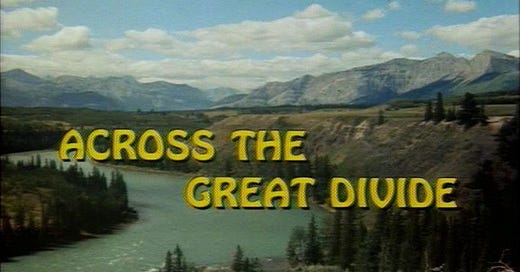Liberalism has long been one of the most influential political philosophies in the Western world, yet its meaning has transformed significantly over time. What once stood for free markets, limited government, and personal liberties has, in many circles, come to represent social democracy, government intervention, and economic redistribution.
In this article, we explore how liberalism evolved from its classical roots into the modern progressive movement, examining both the ideological continuity and the points of divergence that shape today’s political landscape.
1. Classical Liberalism: The Birth of a Movement
Originating in the 17th-19th centuries, classical liberalism was championed by thinkers like John Locke, Adam Smith, and Frédéric Bastiat. The core principles included:
- Individual liberty – Protection of personal freedoms such as speech, religion, and property rights.
- Limited government – A government that protects rights but does not interfere in economic or personal choices.
- Free markets – A belief in laissez-faire economics and voluntary trade.
- The rule of law – Equal treatment under the law and protection of private property.
These ideals laid the foundation for American democracy and British constitutionalism, advocating for a society where government interference was minimized, and personal freedom maximized.
2. The Progressive Shift: Addressing New Challenges
By the late 19th and early 20th centuries, industrialization, urbanization, and economic disparity raised new concerns about how freedom should be defined. In response:
- John Stuart Mill redefined liberty, suggesting that freedom was not just the absence of coercion but the ability to live a fulfilling life.
- Progressivism emerged as a movement that sought government action to address economic inequality, workers’ rights, and monopolies.
- The New Deal (1930s, U.S.), led by Franklin D. Roosevelt, introduced policies such as social security, labor protections, and economic regulations to address the Great Depression.
- Keynesian Economics (1940s-70s) proposed that government intervention was necessary to stabilize business cycles and prevent recessions.
During this period, liberalism started embracing a more active role for the state in ensuring economic and social stability, diverging from its classical roots.
3. Social Liberalism and the Expansion of Government
By the mid-20th century, liberalism had come to encompass broader social concerns, including:
- Civil Rights Legislation, aimed at ending racial discrimination.
- Welfare state expansion, with programs like Medicare, Medicaid, and unemployment benefits.
- Regulation of business, including environmental protections and consumer rights laws.
- Public investment in education and healthcare, increasing access to essential services.
Thinkers like John Rawls argued that justice required redistributing resources to aid the disadvantaged. This period saw a fundamental shift from the original laissez-faire liberalism towards a system in which the government actively intervened to promote social justice.
4. The Divide: Classical vs. Modern Liberalism
By the late 20th century, liberalism had split into two competing strands:
- Classical liberals and libertarians prioritized individual rights, free markets, and limited government, often aligning with conservatives on economic issues.
- Modern liberals and progressives emphasized state intervention, economic redistribution, and social justice policies, moving away from free-market policies.
This divide means that:
- A historical classical liberal like Bastiat or Thomas Jefferson would likely oppose modern liberal policies like wealth redistribution and heavy business regulation.
- Modern liberalism prioritizes equity, aiming to correct historical disadvantages rather than solely focusing on individual opportunity.
- Many former classical liberals now identify as libertarians rather than aligning with the modern left.
5. Liberalism in the U.S. vs. Europe
- In the United States, the term "liberal" has become synonymous with progressivism and social democracy, focusing on expanding government programs and economic intervention.
- In Europe, "liberal" still often refers to classical liberalism, advocating for free markets and limited government (e.g., Britain’s historical Liberal Party).
6. Modern Liberalism and Marxist Influences
While modern liberalism does not fully embrace Marxism, it has absorbed some of its critiques of capitalism. Key areas of overlap include:
- Economic Redistribution – Progressive taxation and welfare programs aim to reduce inequality, though modern liberals do not seek to abolish private property.
- Class Struggle and Identity Politics – Modern liberals broaden Marxist class struggles to include race, gender, and sexuality disparities.
- Government as a Social Tool – Unlike classical liberals who emphasize minimal governance, modern liberals view the state as a necessary force for correcting injustices.
- Speech Regulation – While classical liberalism champions unrestricted free speech, some modern liberals support hate speech laws and content moderation.
Despite these similarities, modern liberalism remains distinct from Marxism because it operates within a democratic capitalist framework rather than advocating for its abolition.
7. Can the Liberal Divide Be Reconciled?
As liberalism continues to evolve in response to modern challenges such as globalization, climate change, and automation, the question remains: Can a balance be struck between:
- The classical liberal belief in free markets and personal responsibility?
- The modern liberal emphasis on social justice and economic fairness?
Both versions of liberalism share commitments to democracy, human rights, and the rule of law, but their approaches to governance and economics have grown increasingly different.
Final Thoughts: The Future of Liberalism
The transformation from classical to modern liberalism is a testament to the adaptability of political ideas. Some see this shift as a necessary evolution, while others view it as a fundamental departure from the philosophy’s original intent.
Regardless of one’s stance, understanding the ideological journey of liberalism is essential for engaging in today’s political discourse.
Would a classical liberal from the 18th century recognize today’s liberalism? Likely not—but that is the nature of ideas: they evolve with time.
Where do you stand on this evolution? Share your thoughts in the comments!




